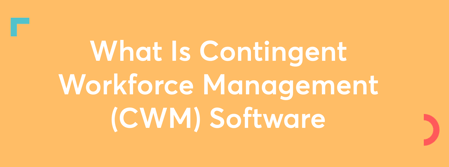- 10 Mar 2019
- 4 mins read
- Posted in
If you are seriously considering a Freelancer Management System (FMS), or have already got the green light internally to go ahead, you’ll want to prepare for the implementation and adoption phase. Most modern cloud-based systems are incredibly easy to use, and the provider will have teams to help you along the way. However, that being said this stage is critical to making sure it delivers on the promises you gave when you sought buy-in for the FMS.
Research by the Oxford Internet Institute, ‘Platform Sourcing How Fortune 500 Firms Are Adopting Online Freelancing Platforms’ identified five common reasons why implementations can be challenging: overcoming internal resistance, addressing risks, avoiding increased coordination costs, and creating new working practices along with socio-technical infrastructures. With this in mind, below we have devised our own step-by-step guide to help you through this process:
1) Have a project owner in place
This is likely to be an operational champion within the company, someone who rolls their sleeves up and gets into the details. They will not only be responsible for keeping track of the progress within the organisation, but will also ensure that there is a unified channel of communication with the FMS provider. This person should be the point of contact throughout the onboarding period and is likely to be the first to receive any news or announcements about features releases.
2) Communicate effectively with freelancers
One might assume that when a new technology like an FMS is implemented throughout the organisation, there has been enough hype that everybody is aware of what is happening. Remember that a lot of freelancers work remotely, and have no idea about what is discussed at lunch or during a coffee break. An FMS is a tool for both you and them, so make sure you give them some notice that a new system is coming. Communicate effectively about when you are likely to roll it out, what they are likely to gain from it, and how they can best help you achieve your desired goals. Like any other piece of software, it is only as useful as the information you put into it. So, tell your freelancers exactly how you want them to manage their profile such that it can speed up the process for both of you. This will save you the headache of telling each of them to change things.
3) Get continued buy-in from stakeholders
Continue to communicate with your stakeholders at relevant points in the project, given that they gave their backing when you were originally looking for buy-in. Provide updates particularly on areas that were key points of concern for them. When people see that you’re consistent and continue to keep them involved where appropriate, it will reinforce their decision to back you and the project as being the right choice.
4) Consider your implementation time
You can get set up on your FMS in a matter of minutes, think you have mastered it, and then find yourself backtracking later on. This can cause frustration and sometimes spark a desire to give up on the project. Equally, you can take so long to ease people in, that you find the project losing steam and people reverting back to old methods. Nailing the implementation time is important, get this right from the beginning and it will pay dividends further down the line.
Our advice would be to seek the help of your account manager, who will be able to assess your unique company situation and schedule in a set of onboarding calls to both help you roll out the software and teach you how to use it effectively.
It’s a good idea to document your processes as you go. This way when more people start using the platform there’s already a procedure in place. This not only creates consistency, but also helps to speed up platform adoption.
5) Train your team
When you have your onboarding call with the FMS provider you need to make sure that all your key stakeholders - those people who’ll be using the system - are on the line. It’s important to get them involved as soon as possible.
Your account manager will be a great source of knowledge and will ensure that your stakeholders are up to speed as quickly as possible. This means that you’ll be able to use the system from day one, and that the business can benefit from all the FMS has to offer.
Remember that freelancers might also benefit from some training, so ask them, and if that is the case organise a call with them and bring in your account manager to offer expert advice.
6) Make iterative improvements
Once you’ve completed the implementation allow time for the system to bed in. Track its use and get user feedback – both internally and from your freelancers. This will allow you to make iterative improvements to your processes and ensure you get the maximum benefit from your FMS.
As you look to the future, explore ways that the benefits of the FMS can be extended outside your department. With the growth of freelancers and contractors across every domain, it could provide the flexible talent required to serve many other areas of the business.
The bottom line is this. The implementation and adoption of an FMS, whilst requiring time and a new way of working, needn’t be daunting. Working with the right provider, they’ll help you every step of the way. And that means you’ll be reaping the full benefits of the system in no time, with the opportunity to gain even more from it as time goes by.
7) Communicate with your account manager
Every good FMS provider will assign you a dedicated account manager – and their input shouldn’t stop after you’re on board. They are designed to be there for your onboarding and beyond, so if you are wondering how you could extract more value from your FMS, pick up the phone or send them an email.
They will also be on hand to walk you through any new features, so ask them to keep you up to date with the ever-evolving the software.
But most of all, make sure that your account manager is someone you can build a good working relationship with. You may find you don’t need them that much but it’s always good to know they’re on hand – particularly when you’re likely to be using the system for the long term.

Floris ten Nijenhuis
Speak to us to find out how we can help you pay your contractors more efficiently
Related articles
What is a Vendor Management System (VMS)? A Complete Guide
What is a Vendor Management System (VMS)? A Complete Guide
Discover what a Vendor Management System (VMS) is and why it’s essential for managing your workforce. Streamline vendor management with ease.
Best Contractor Management Software for 2025
Best Contractor Management Software for 2025
Discover the best contractor management software to streamline workflows, ensure compliance, and simplify payments. Manage global contractors with ease.

Mastering Influencer Management: Strategies for Effective Collaboration
Our guide to influencer management, exploring strategies, tools, and tips to create successful influencer relationships and enhance your marketing impact.

10 Reasons Why You Don’t Need a Contractor Management System
Discover 10 hilarious reasons why you absolutely don’t need a contractor management system - because who needs efficiency, happy freelancers, or sleep?

What Is Contingent Workforce Management Software?
Discover how contingent workforce management software enhances cost savings & access to talent. Learn about essential tools, compliance & best practices.

Deel vs. the Competition: Discover the Best HR Software Alternatives
Discover the best Deel alternatives for global HR management. Compare features, pricing, and reviews to find the best solution for your global workforce.
The Ultimate Guide to External Game Development
The Ultimate Guide to External Video Game Development
Explore our ultimate guide on external game development, covering crucial strategies, tools, and tips to manage freelance developers efficiently.

What is a 1099 employee?
This is a complete guide on 1099 employees. Learn how to classify your workers, improve finances, boost employee morale, and enhance your reputation.

6 Reasons Why You Should Hire a Freelance Social Media Manager
This is a guide on the benefits of hiring a social media manager. Learn how to save time and enhance your social media reputation from expert insights.
Scalable Workforce Solutions for Digital Marketing Agencies
Scalable Workforce Solutions for Digital Marketing Agencies
For marketing agencies, levels of work can vary significantly. How do you scale your team to meet client needs while avoiding overcapacity at other times?
